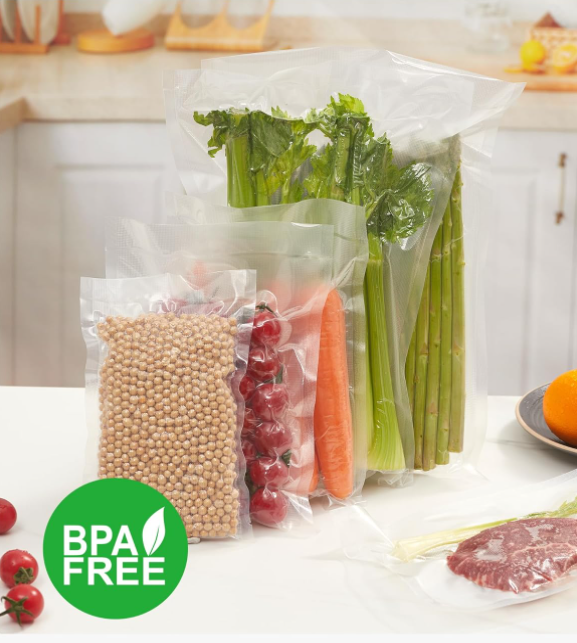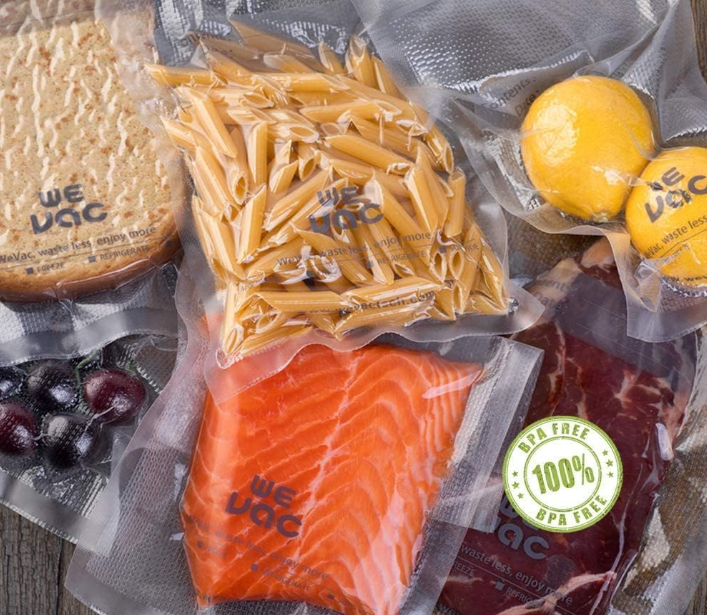Vacuum Packaging Bags: The Best Solution for Food Preservation and Transportation
In the highly competitive food market, "freshness" and "safety" have become central consumer concerns. Whether it's prepared foods, meat products, coffee beans, or ready-to-eat meals, brands are constantly seeking packaging solutions that extend shelf life, lock in flavor, and enhance visual appeal.
However, traditional packaging often falls short in areas like seal integrity, oxygen barrier properties, or durability during transport—leading to loss of freshness, flavor degradation, or even bacterial growth causing returns. This is precisely where vacuum packaging bags for food make their mark.
MTPAK specializes deeply in the food and beverage packaging sector, committed to providing brands with holistic solutions that balance functionality, sustainability, and visual value. From coffee packaging to bags for prepared foods, we utilize high-barrier, multi-layer composite materials and precision sealing technology to help brands maintain product quality from production all the way to the consumer's table. Today, the vacuum packaging bag is more than just a storage tool—it's an extension of brand quality and consumer trust.
What are the core advantages of vacuum packaging bags?
The success of vacuum packaging bags isn't just about "removing air"—it lies in its ability to slow food degradation on both a physical and chemical level.
First, blocking oxygen and moisture is key. Oxygen accelerates food oxidation and microbial growth; vacuum packaging effectively inhibits this process, helping food stay fresh even without preservatives.
Secondly, the vacuum environment also reduces fat oxidation and flavor loss, which is especially important for high-fat or seasoned foods.
Additionally, the sealed bag can withstand external pressure, avoiding damage from friction during transportation.
From a brand perspective, another implicit value of vacuum packaging is—enhancing consumer trust. When customers see the product inside the bag—firm, neat, and transparent without air bubbles—they intuitively associate it with "cleanliness, safety, and high quality," thereby strengthening brand perception.
What types of vacuum packaging bags are available?
The world of vacuum packaging bags is far more nuanced than one might think. It's not simply about "vacuuming and sealing," but rather a scientific system based on the food's properties, preservation goals, and brand positioning. Different bag structures and material combinations determine the freshness period, appearance, and even the consumer experience.
Let's look at several mainstream types of vacuum packaging bags from a practical application standpoint:
Nylon/Polyethylene (PA/PE) Vacuum Bags – The Mainstay for Everyday Freshness
This is the most widely used type of vacuum packaging on the market. The nylon layer (PA) offers excellent oxygen barrier properties and puncture resistance, while polyethylene (PE) provides reliable sealing and flexibility. Combined, they effectively prevent air and moisture ingress, suitable for refrigerated meats, seafood, marinated products, bean products, and other foods requiring short to medium-term preservation.
Aluminum Foil Vacuum Bags – The Pinnacle of Barrier Performance
For foods requiring long-term protection from light, moisture, and oxygen—such as coffee beans, nuts, spices, and dehydrated foods—aluminum foil vacuum bags are the preferred choice. Their multi-layer composite structure blocks 100% of light and oxygen, locking in flavor and aroma to the greatest extent. Furthermore, the aluminum foil material effectively prevents condensation or oxidation caused by external temperature fluctuations, making it a common solution for premium food brands showcasing a "professional and high-quality" image.
High-Barrier Multi-Layer Composite Bags – Balancing Performance and Visual Appeal
When brands want consumers to see the food directly without sacrificing preservation performance, transparent multi-layer composite vacuum bags become the ideal choice. These bags typically combine functional layers like PET, PA, and EVOH, offering not only strong oxygen barriers but also resistance to high-temperature sterilization or freezing environments. Examples include ready-to-eat cooked dishes, marinated meats, vacuum-packed corn, and ready-to-eat seaweed.
Vacuum Shrink Bags – Enhancing Professional Product Appearance
After vacuum sealing, these bags are treated with hot water or air, causing them to tightly conform to the product's surface, creating a smooth, bubble-free appearance. They prevent juice leakage, avoid oxidation, and enhance display aesthetics, making them highly suitable for premium chilled foods like meats, hams, cheeses, and smoked products. Some brands also print logos or textures on the shrink bag surface to increase brand recognition. MTPAK ensures a fuller product shape and a more premium visual appeal after shrinking through precise heat-seal control and wrinkle-resistant structures.
3D / Stand-Up Vacuum Bags – The Optimal Solution for Bulk Foods
For food businesses packaging larger items, such as whole chickens, whole fish, large cuts of marinated meat, or industrial ingredients, stand-up bags offer better space utilization. Their three-dimensional structure prevents deformation during vacuuming and makes stacking and storage easier.
Resealable & Functional Vacuum Bags – Innovation Centered on User Experience
Modern consumers increasingly value convenience, driving the evolution of vacuum packaging. Functional vacuum bags with zippers, easy-tear notches, or double-seal designs not only facilitate multiple uses but also help maintain the vacuum state for remaining food.
Behind these types of vacuum packaging bags lies the wisdom of brands balancing food safety, supply chain efficiency, and brand experience.
Why are vacuum packaging bags a potential option for sustainable packaging?
As food brands place greater emphasis on environmental issues, vacuum bag design is also evolving towards sustainability.
Previously considered difficult to recycle, this issue is now being gradually addressed through new recyclable high-barrier films and mono-material composite technologies. For example, structures using pure PE or PP allow packaging to maintain performance while achieving higher recyclability rates. Furthermore, we offer brands Post-Consumer Recycled (PCR) material options, helping companies reduce carbon emissions in their packaging processes.
The significance of sustainable vacuum packaging lies not only in compliance but also in communicating the brand's sense of responsibility to consumers. When a food brand can balance "preservation power" with "environmental responsibility," its competitive advantage will exist not just on the supermarket shelf, but also in the minds of consumers.
Conclusion
In the food industry, packaging carries not just the product, but the brand's promise. Vacuum packaging bags extend shelf life, lock in flavor, enhance display appeal, optimize transport efficiency, and strengthen consumer trust. For brands, choosing the right vacuum packaging is not just a technical decision—it's a comprehensive reflection of brand competitiveness, supply chain resilience, and market performance.
MTPAK understands that every food product has unique needs. We provide not just materials, but complete packaging solutions. Take action now to let your product lead in freshness, safety, and brand image. Contact MTPAK to explore the most suitable vacuum packaging solution for your food products, ensuring every item reaches the consumer in its best possible condition.
Email:account@mtpak.com
Contact us:https://mtpak.com/contact-mtpak




